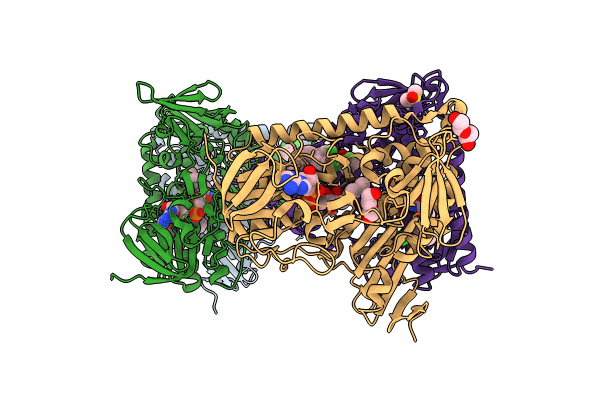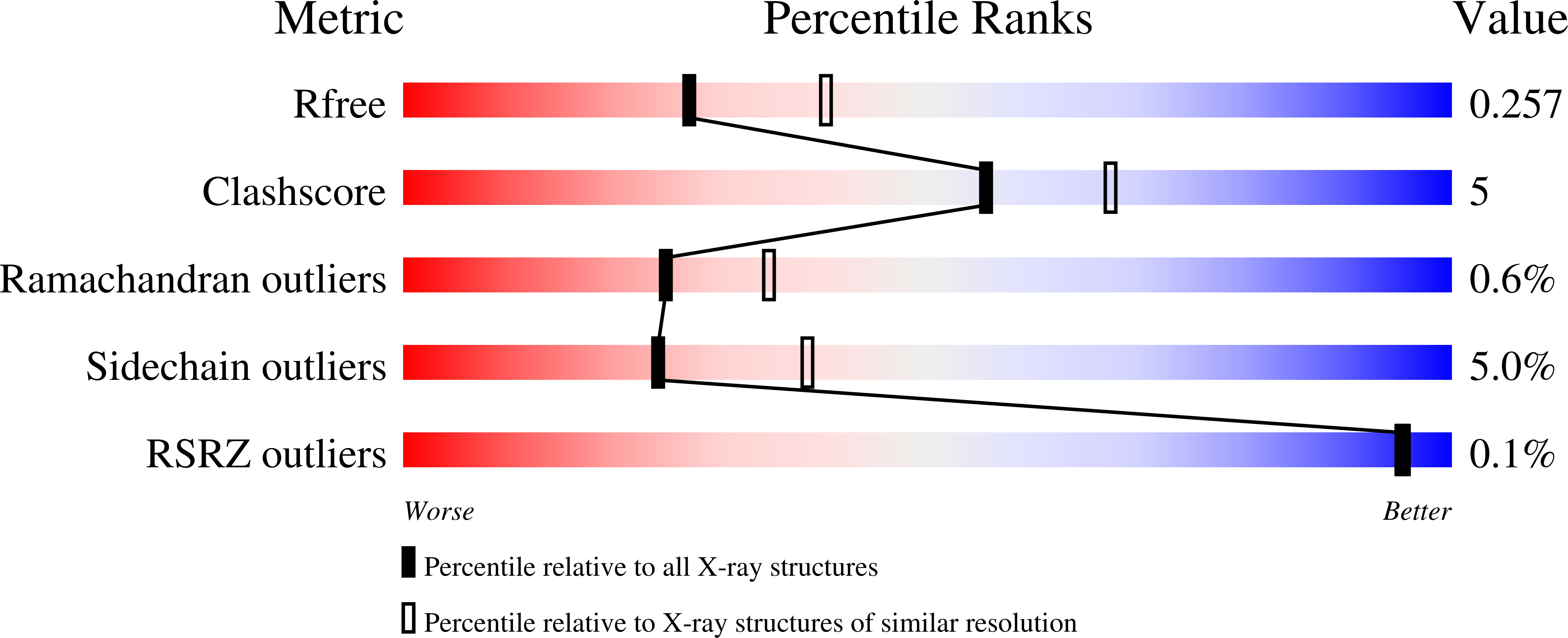
Deposition Date
2023-06-15
Release Date
2024-04-03
Last Version Date
2024-11-06
Entry Detail
PDB ID:
8PF5
Keywords:
Title:
Crystal structure of Trypanosoma brucei trypanothione reductase in complex with 1-(3,4-dichlorobenzyl)-4-(((5-((4-fluorophenethyl)carbamoyl)furan-2-yl)methyl)carbamoyl)-1-(3-phenylpropyl)piperazin-1-ium
Biological Source:
Source Organism:
Trypanosoma brucei (Taxon ID: 5691)
Host Organism:
Method Details:
Experimental Method:
Resolution:
2.42 Å
R-Value Free:
0.25
R-Value Work:
0.18
R-Value Observed:
0.19
Space Group:
P 1 21 1


